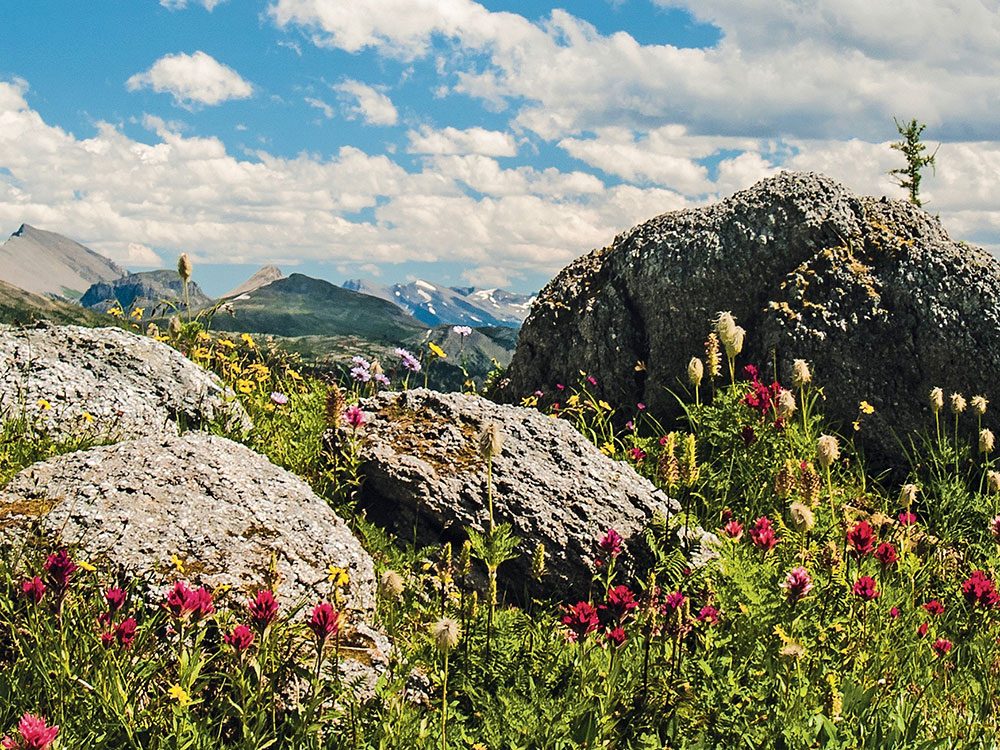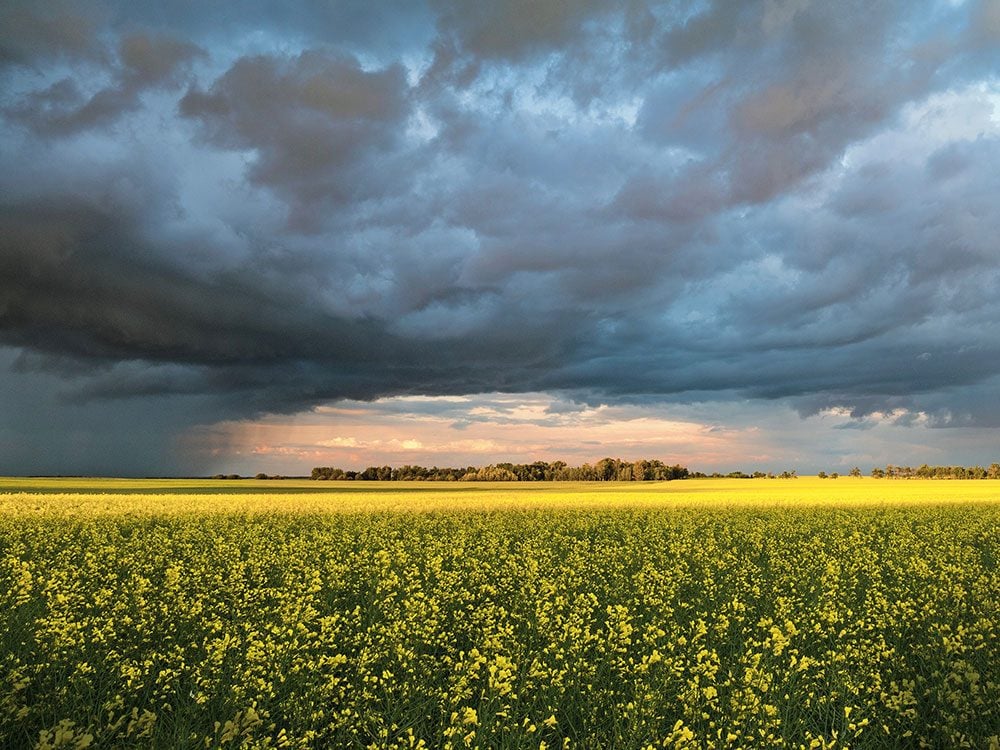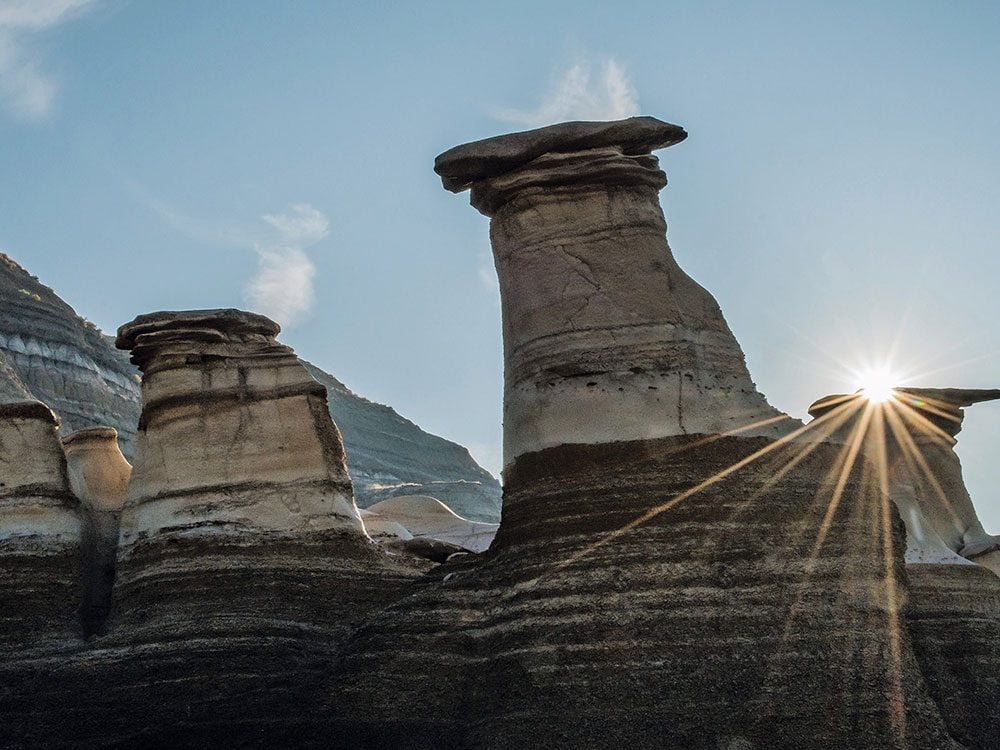
Alberta Scenery is a Feast For the Eyes
Alberta is a Prairie province with an enthralling beauty and friendly people. Once immersed in its land and culture, an unsuspecting heart can be easily stolen. From rolling Prairie fields and jagged Rocky Mountain peaks to the eerie beauty of the badlands, Alberta scenery is full of breathtaking beauty. It’s also home to several beautiful national parks. In southern Alberta is Waterton Glacier International Peace Park, a biosphere reserve that borders the United States in the state of Montana. Moving north you will find Banff and Jasper National Parks. On the edge of these parks are any number of provincial parks with much to see and do.
Here are 10 national parks every Canadian needs to visit.

Healy Pass
Part of the attraction of southern Alberta is its biodiversity. Heading west, you come across the lovely rolling landscape of the foothills, where you can see lots of ranch land and cattle. A short drive further west are the Rocky Mountains. With their soaring peaks, numerous glacial lakes and valleys, the Rockies exude a feeling of power in their regal splendour. With many lovely hiking trails, opportunities for wildlife-watching and more, the Rockies also offer a great opportunity for the adventurous soul. It is such an amazing place that it draws us back every summer to hike as often as possible. My husband Neil and I often hike for hours without meeting another person, while other times we encounter friendly travellers from other parts of Canada and around the world.

Endless Canola Fields
On some outings, we head east. I especially love driving around in the summer months when the crops are high, many of them glowing in the sun—such as the fluorescent yellow of canola. Alberta is a major producer of canola, barley and wheat, which creates a spectacular patchwork of colours on the land all around us. Combined with the fantastic skies we get, it all makes for spectacular Alberta scenery.
Here’s what you’ll find in Alberta’s stunning Kleskun Hill Natural Area.

Drumheller Badlands
Still further east, leaving behind the fertile land of the Prairies, you encounter a totally different but just as interesting and magnificent ecosystem. It is mostly dry land, sedimentary rock and clay eroded by water and wind known as the badlands. An immensely imposing landscape that provides an eerie reminder that dinosaurs once roamed freely here. Interesting formations such as hoodoos, canyons, ravines and mesas abound. The many colourful rock formations make for great sightseeing. In the town of Drumheller, you can visit the Royal Tyrrell Museum, which offers excitement and entertainment for people of all ages, with a world-class collection of dinosaur bones and historical artifacts.
Discover the best places to see dinosaur fossils in every province.

Calgary
The major urban centre in the south of the province is Calgary, a great modern and multicultural city with a population of more than one million people. It is located where the Bow River and Elbow River meet. Conveniently, it’s only about a 45-minute drive from Calgary to the Rockies. (Check out more great day trips from Calgary.) We love visiting this city as there is so much to do, including a great variety of artistic offerings, shopping centres and lovely parks full of hiking trails. These parks also feature more wildlife than you might expect, including various birds, foxes, rabbits and, sometimes, a moose or deer! Calgary is known for its bright, sunny days—it boasts more sunny days than any other major Canadian city. And yes, it can be very cold in winter; however, when the chinook winds move in, a cold day will turn into a warm one in a matter of hours.
Here are 40 unforgettable things to do in Calgary on your next visit.

Alberta’s Iconic Grain Elevators
A quick look at Alberta’s history shows it is quite colourful, with an exciting past. Our rich culture is influenced by the First Nations peoples, descendants of the original inhabitants of Canada, who lived here for many thousands of years before explorers and fur traders arrived from Europe. As the bison disappeared from the Canadian west, cattle ranches moved in to take their place. Early in the 19th century, the railway began being developed, running through the Calgary area. This changed the production in this region again as now the area was easier to access and small farmers of mixed production started to change the look of this land. Small towns were developed along the rail lines and Alberta became a province on September 1, 1905.
Alberta is full of history and adventure. Whether it’s watching for changes in light and shadows, chasing powerful storms or seeking creatures scurrying about, living here has played a big role in helping me develop my skills and inspiration as a nature photographer. I am thankful for the experiences this province has given me, and I look forward to many more years in this wonderful place I call home.
For more stunning Alberta scenery, check out this photographic tour of the western provinces of Canada.